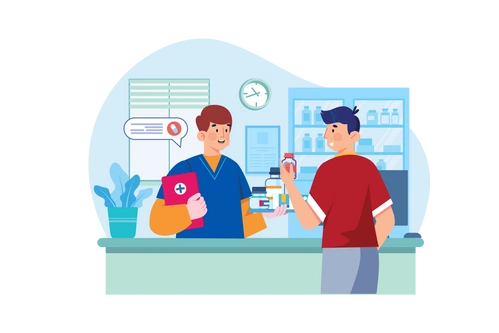
Close the Gap: Top Strategies for Managing Your Medicare Prescription Costs
Medicare is a challenging topic, and one aspect that often causes major concern among beneficiaries is the Medicare coverage gap, also known as the "donut hole." This gap occurs in Medicare Part D prescription drug plans, and it can lead to higher Medicare prescription costs. Knowing how to plan for and manage this coverage gap is essential for beneficiaries who want to maintain control over their healthcare expenses throughout the year.
In this article, we will discuss the top strategies for managing your Medicare prescription costs, helping you minimize the impact of the coverage gap on your finances. By understanding your plan, exploring ways to lower drug costs, and seeking additional assistance, you can be better prepared to tackle the Medicare donut hole head-on.
Know Your Plan and Benefits
A solid understanding of your Medicare Part D plan is crucial to managing your prescription costs and avoiding any surprises when it comes to the coverage gap. This is also true if you have prescription drug coverage built into your Medicare Advantage (Part C ) plan. The donut hole occurs in both cases. Let’s review some key components that will help you stay informed.
1. Get to Know Your Part D Plan
Familiarize yourself with the different phases of your plan, including the deductible, initial coverage, the coverage gap, and catastrophic coverage.
Review your plan's formulary, which is a list of covered medications, and take note of the associated costs and any restrictions or requirements.
Keep track of your total drug costs throughout the year to know when you're approaching the coverage gap.
2. Explore Options During the Annual Election Period
Each year, from October 15th to December 7th, you have the opportunity to change your Medicare Part D plan during the Annual Enrollment Period.
Review your current plan and consider whether it still meets your needs, especially if your medications or health conditions have changed.
Compare different Part D plans to find one that covers your prescriptions at the lowest possible cost, potentially minimizing your out-of-pocket expenses during the coverage gap.
3. Utilize Medicare's Plan Finder Tool
Medicare's Plan Finder tool is an excellent resource for comparing different Medicare Part D plans based on your specific prescription needs.
Enter your current medications and dosages to get an estimate of your annual out-of-pocket costs, including costs during the coverage gap.
Use the tool to identify plans with lower drug costs or additional coverage during the gap, which may help you minimize your expenses.
Lower Your Prescription Drug Costs
One of the most effective ways to minimize the impact of the Medicare coverage gap is to lower your prescription drug costs.
One simple way you can do this is by looking at generic alternatives to any of your brand-name medications. Generic medications often cost significantly less than their brand-name counterparts while providing the same therapeutic effects. Discuss with your healthcare provider if there are generic alternatives available for your current prescriptions. Also, make sure to check your plan's formulary, as some Medicare Part D plans may cover generic drugs at a lower cost than brand-name drugs, even during the coverage gap.
You should also discuss medication options and costs with your healthcare provider. You can voice your concerns about the cost of medications, especially when entering the donut hole. Your provider may be able to recommend alternative medication or treatment options that are more affordable and won’t compromise your health. You should regularly review your medications with your doctor to ensure they’re still necessary.
Lastly, most Part D plans have a mail-order or online options. These can provide cost savings and convenience by delivering medications directly to your home. Be sure to ensure they are licensed and reputable to guarantee the safety and efficacy of the medications you receive.
Apply for Extra Help or State Pharmaceutical Assistance Programs (SPAPs)
If you're struggling with prescription drug costs, you may be eligible for additional assistance through programs like Extra Help or State Pharmaceutical Assistance Programs (SPAPs). These programs can provide financial support to help you manage your medication expenses.
Extra Help is a federal program designed to assist low-income Medicare beneficiaries with prescription drug costs. Eligibility is based on income and resource limits, which are adjusted annually. If you qualify for Extra Help, you may receive assistance with premiums, deductibles, and copayments, helping to reduce your out-of-pocket expenses.
Many states offer SPAPs to help residents with prescription drug costs, with eligibility criteria and benefits varying by state. Some SPAPs can be used alongside Medicare Part D coverage, providing additional assistance during the coverage gap. To find out if your state has an SPAP and determine whether you're eligible, visit your state's health department website or contact your local State Health Insurance Assistance Program (SHIP) for guidance.
Utilize Prescription Drug Discount Programs
Prescription drug discount programs can be another valuable resource for managing your Medicare prescription costs. These programs offer discounts on medications that may not be covered by your Medicare Part D plan or can help reduce costs during the coverage gap.
Prescription drug discount programs work with pharmacies to negotiate lower prices on medications, making them more affordable for consumers. These programs are typically free to join and can provide significant savings on both generic and brand-name medications. We recently released an article that covers the top eight drug discount programs.
While you cannot use a discount program and Medicare Part D coverage for the same prescription simultaneously, you can choose the option that provides the lowest cost for each medication. When you're in the coverage gap, using a discount program may help lower your out-of-pocket costs for certain medications. Keep in mind that the cost of medications purchased using a discount program will not count toward your Medicare Part D out-of-pocket spending limit.
Taking control of your Medicare prescription costs can sound scary, but with the right strategies and resources, you can effectively navigate the coverage gap and minimize its impact on your finances. Remember that you don't have to face this challenge alone – our team at Local Medicare Specialists is here to help. Reach out to us for personalized guidance and expert advice tailored to your unique situation. Together, we can find the best solutions to manage your Medicare prescription costs and ensure you get the most out of your Medicare benefits.
Still Have Medicare Questions?
Schedule a FREE Medicare plan consultation with an agent in your neighborhood.
Privacy and Security: Your privacy and security are extremely important to us. Your personal information is protected by our Privacy Policy
LocalMedicareSpecialists.com is privately owned and operated by LMS Insurance LLC. LocalMedicareSpecialists.com is a non-government resource for those who depend on Medicare, providing Medicare information in a simple and straightforward way.
We do not offer every plan available in your area. Currently we represent 11 organizations which offer 173 products in your area. Please contact Medicare.gov, 1-800-MEDICARE, or your local State Health Insurance Program (SHIP) to get information on all of your options.
